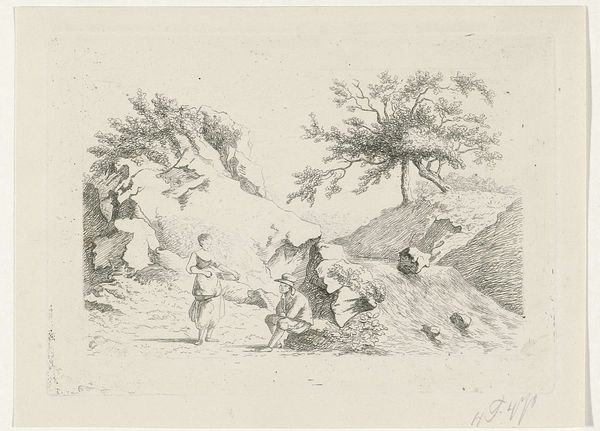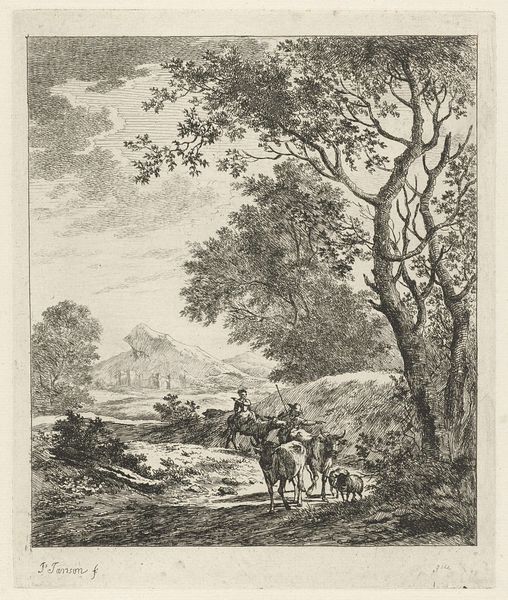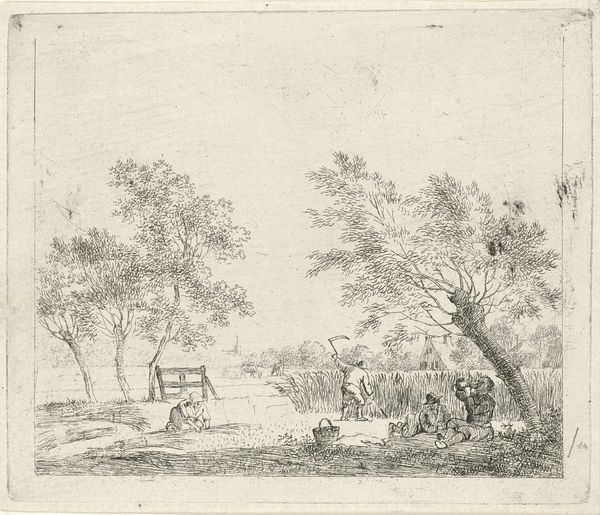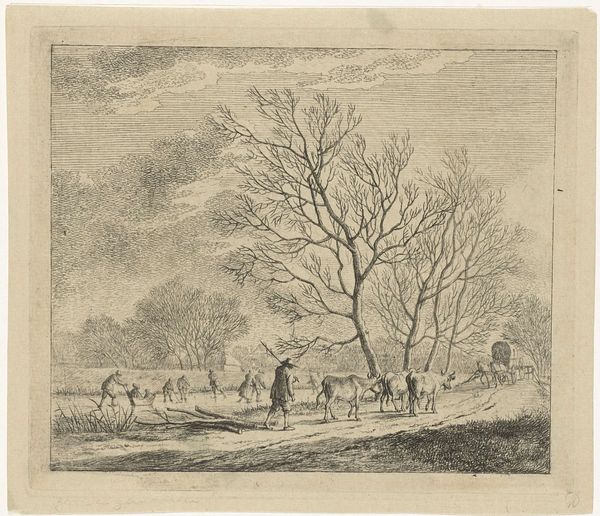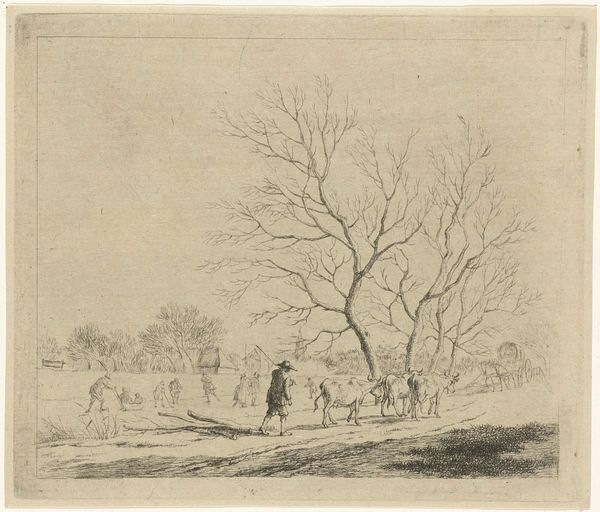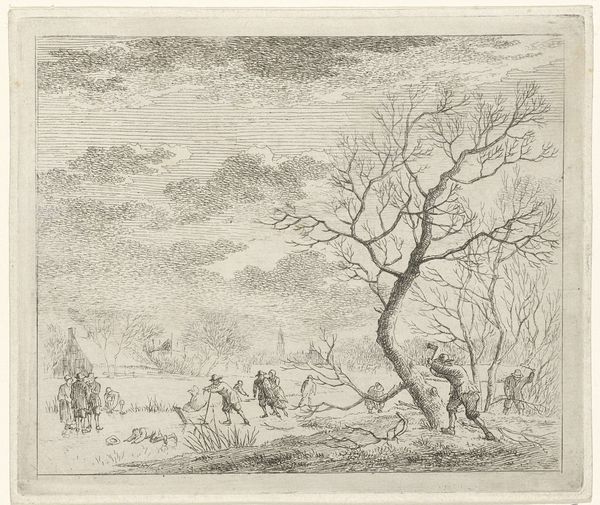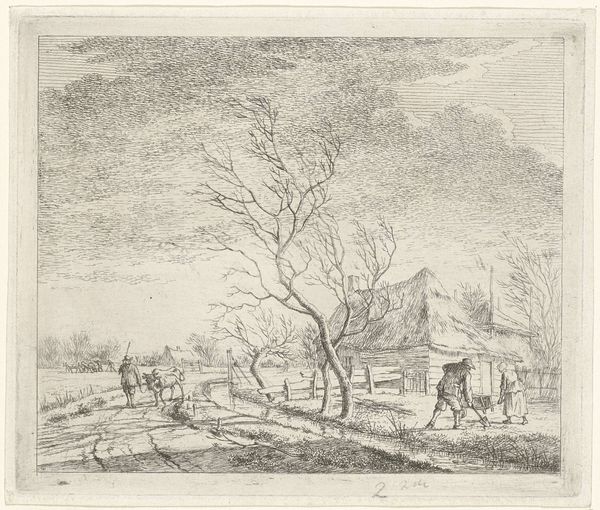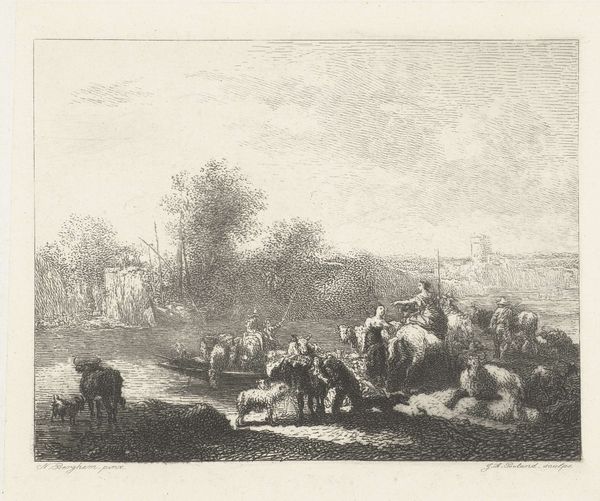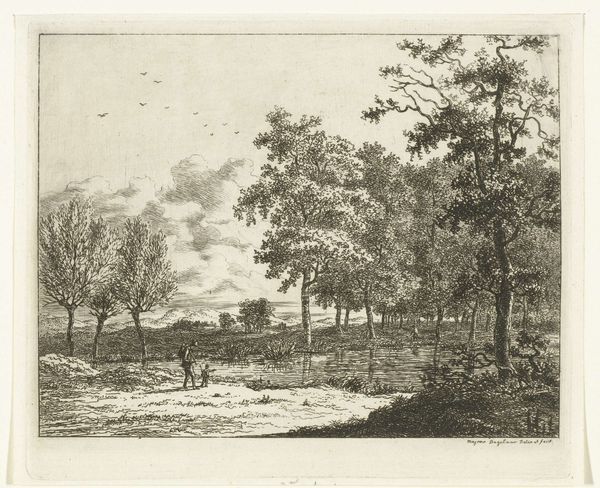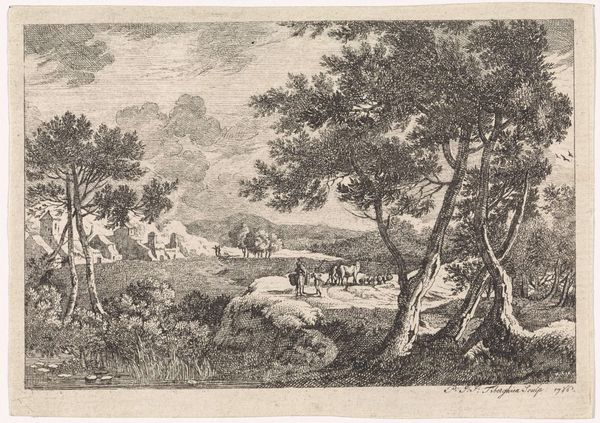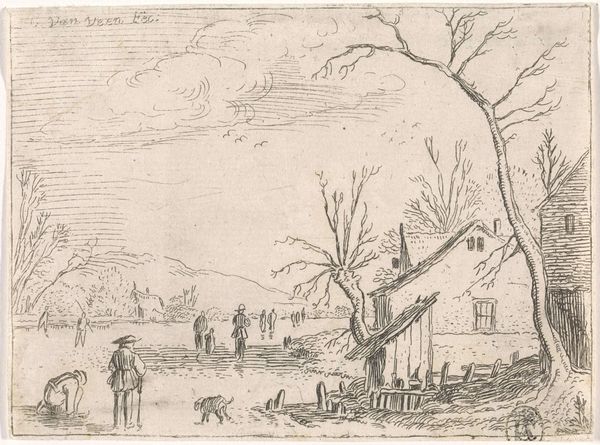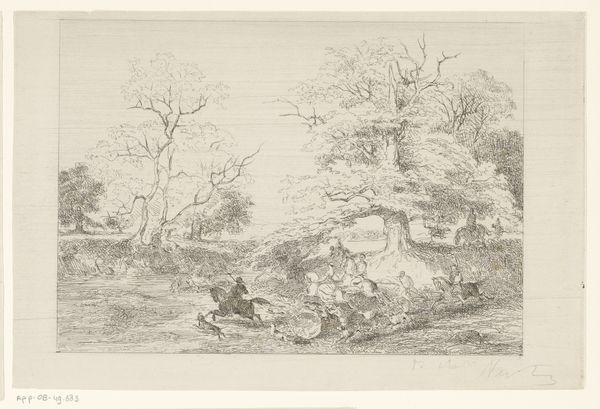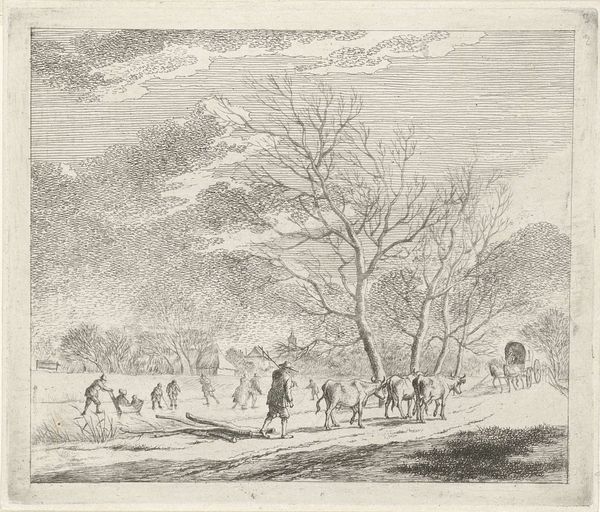
Winterlandschap met sleeënde kinderen en verschillende treksleden 1761 - 1824
0:00
0:00
print, etching
# print
#
etching
#
dog
#
old engraving style
#
landscape
#
etching
#
figuration
#
romanticism
#
genre-painting
Dimensions: height 172 mm, width 242 mm
Copyright: Rijks Museum: Open Domain
Editor: This wintry scene evokes a real sense of cold; the etching seems to almost vibrate with it. Curator: Indeed. This is "Winter Landscape with Sledding Children and Various Sleds," an etching by Johann Christian Klengel, created sometime between 1761 and 1824. Note how Klengel's delicate lines shape the composition, structuring depth with tonal variation. The upper section feels lighter than the grounded density of the foreground. Editor: Yes, and observe how the line work is much more gestural in the upper section creating a softer focus versus the detailed specificity of the teams pulling sleds, the children sliding on the hill. Etching as a method feels perfectly suited to capturing a winter’s scene because it embraces labor at every stage of the production—from preparing the plate, applying the ground, and incising to then printing itself. Curator: Quite so! The systematic hatching technique serves not only to build tone and depth, it mirrors the cyclical patterns of nature, and the systematic labor implied by human presence. Editor: Beyond its visual arrangement, I’m drawn to how the print implies the raw labor of extracting materials from the land in the lower register, that would eventually result in comfort. Someone is laboring in that etching. Even leisure demands materials. Curator: One might see how Klengel, with the positioning of the bare tree and frozen landscape, echoes the prevailing Romantic aesthetic, particularly in Germany. His skilled orchestration of line transforms the common and cyclical labour into an image possessing a subtle gravitas. Editor: I see it too, although this work highlights to me the unromantic labor that went into creating something as "simple" as sledding for children. Without someone harvesting wood, tanning the hides for harnesses, there is no image to dissect for structure and tone. Curator: Thank you for bringing forth this awareness of material and production to inform the aesthetic appreciation of Klengel’s work. Editor: And thank you for highlighting that there’s so much we can see and read in those very specific lines.
Comments
No comments
Be the first to comment and join the conversation on the ultimate creative platform.
